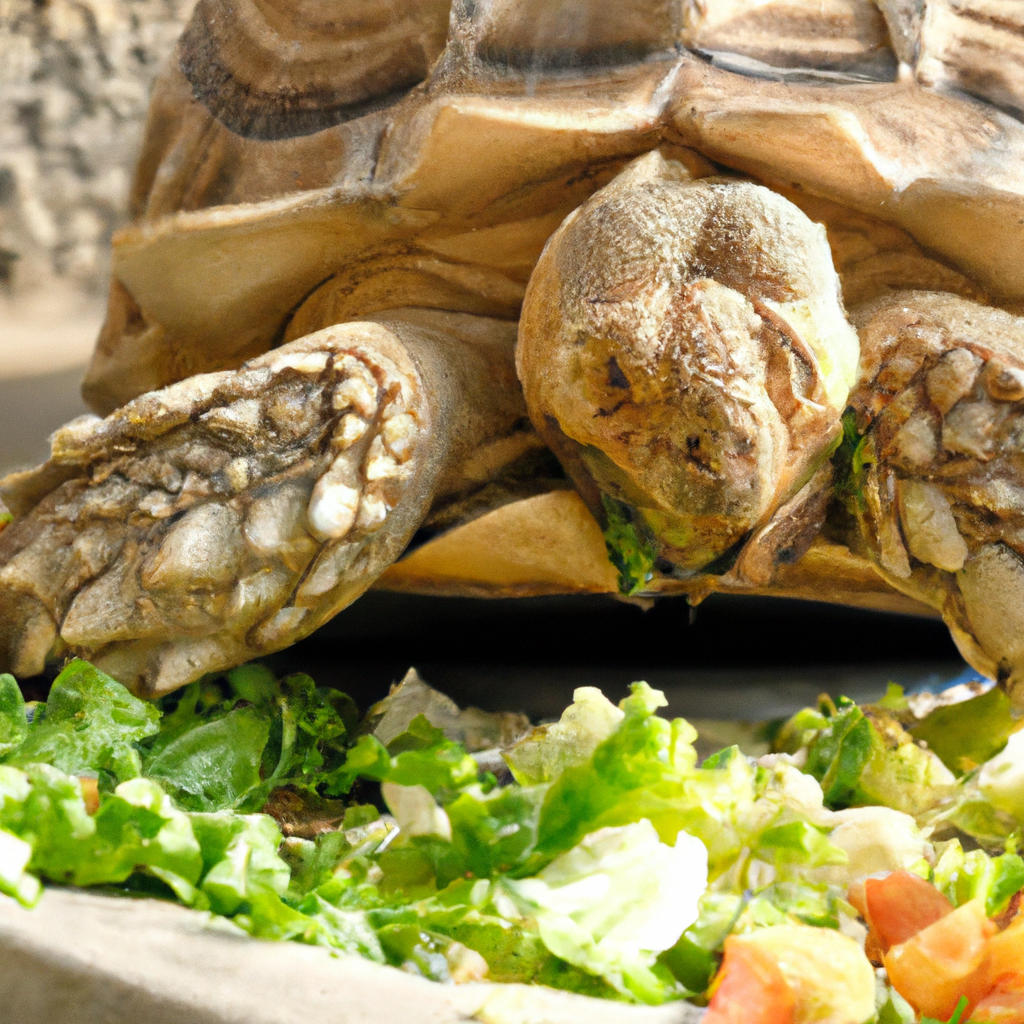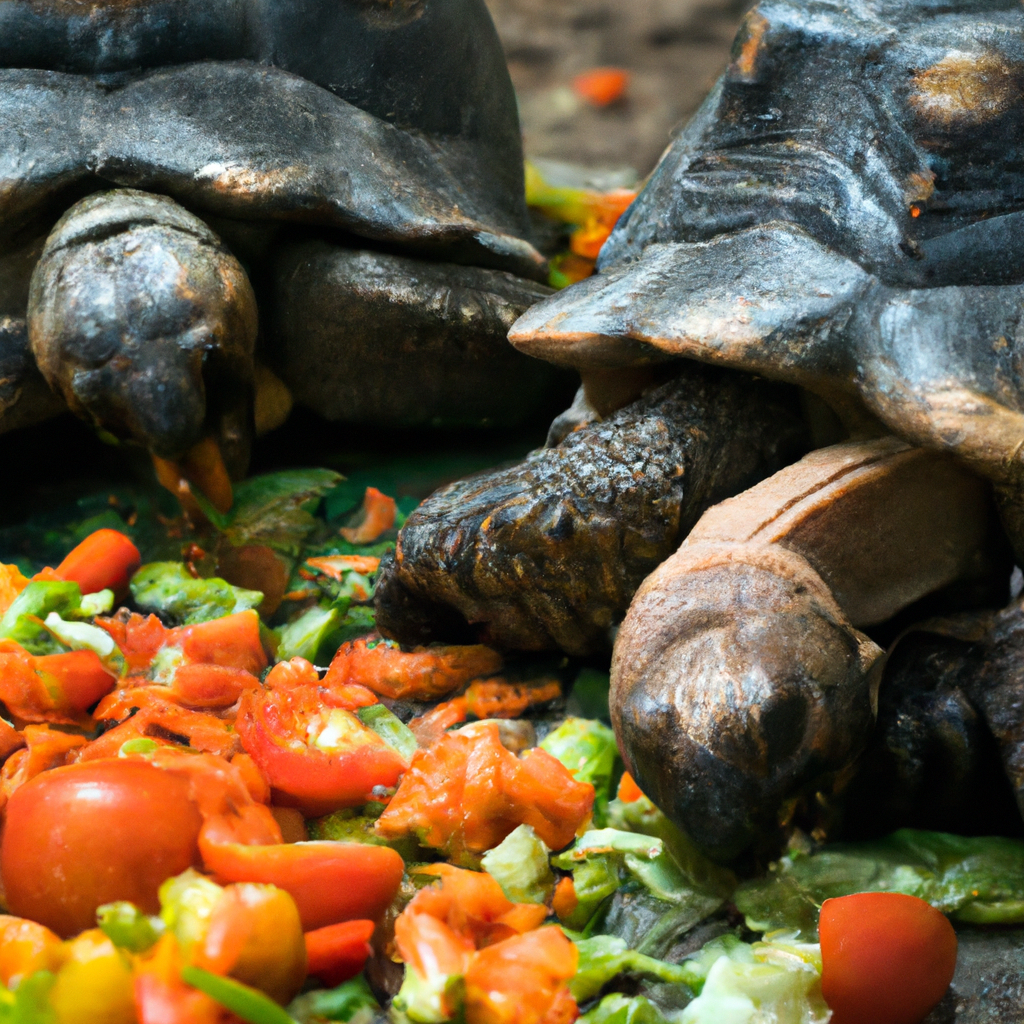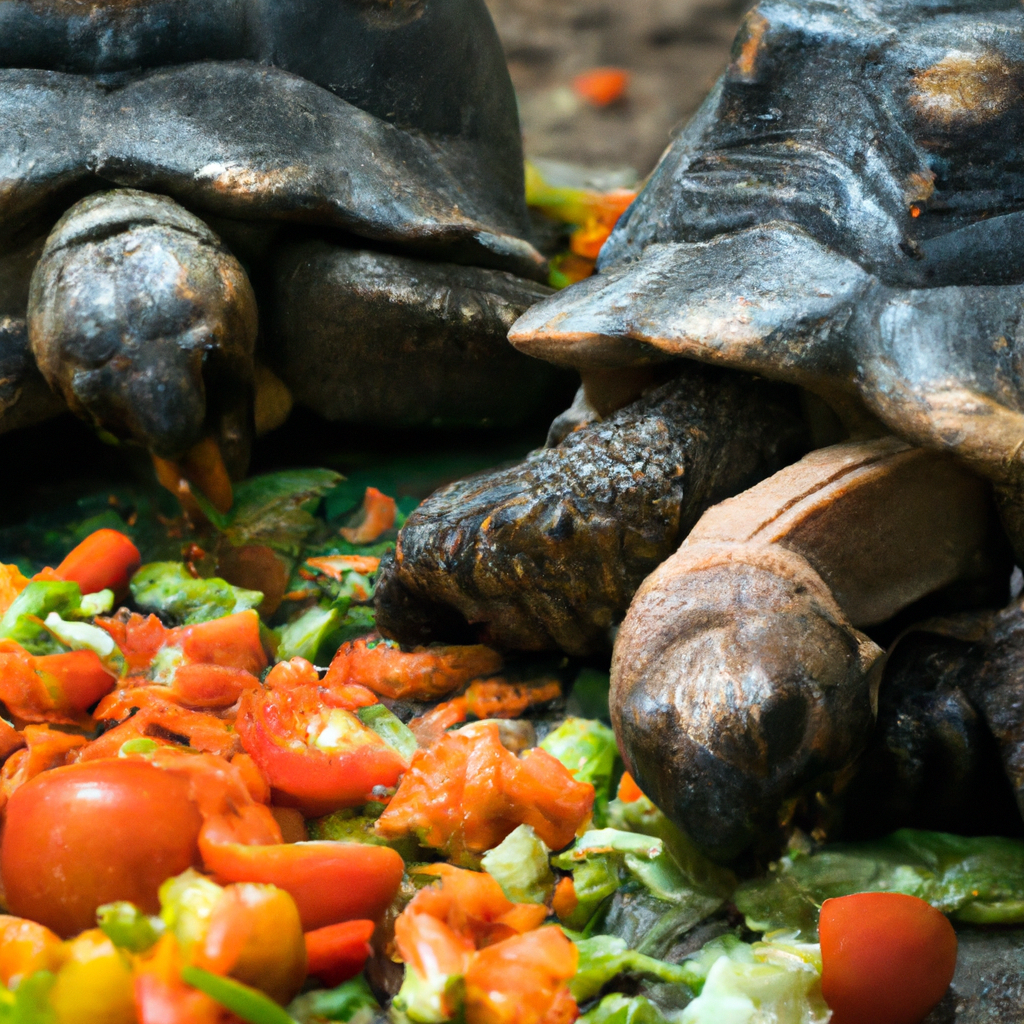Have you ever wondered how to keep your pet turtle in tip-top shape? Well, look no further! In this article, we will provide you with some helpful tips on how to maintain a healthy body condition for your beloved shelled friend. From monitoring their diet to providing ample exercise opportunities, these simple yet effective methods will ensure that your turtle remains fit and thriving. So, if you’re ready to learn all about turtle weight management, read on!

Causes of Weight Gain in Turtles
Overfeeding
One of the primary causes of weight gain in turtles is overfeeding. While it may be tempting to shower your turtle with abundant food, overfeeding can lead to excessive weight gain. Turtles have a slow metabolism, and their bodies are not designed to digest large amounts of food. When they consume more calories than they can burn off, the excess is stored as fat, leading to weight gain.
Lack of Exercise
Just like humans, turtles also need regular exercise to maintain a healthy body condition. Turtles that are confined to small enclosures or do not have ample space to move around are at a higher risk of weight gain. Without enough physical activity, their bodies cannot burn off the calories they consume, resulting in weight gain.
Poor Diet
A poor diet lacking in essential nutrients can also contribute to weight gain in turtles. Feeding them low-quality and nutritionally deficient foods can lead to imbalances and deficiencies, causing their bodies to store excess fat. Additionally, an insufficient intake of fiber can lead to digestive issues and weight gain as well.
Health Issues
Apart from lifestyle factors, certain health issues can also cause weight gain in turtles. Metabolic disorders, such as hypothyroidism or hormonal imbalances, can affect their metabolism and lead to weight gain. It is essential to monitor your turtle’s overall health and address any underlying medical conditions with the help of a veterinarian.
Signs of an Overweight Turtle
Shell Deformities
One of the noticeable signs of an overweight turtle is shell deformities. Excessive weight can put pressure on the shell, causing it to become misshapen or develop unusual growth patterns. If you notice any changes in the shape or structure of your turtle’s shell, it is a possible indication of weight-related issues.
Difficulty Swimming
Weight gain can hinder a turtle’s ability to swim properly. If you observe your turtle struggling or showing signs of labored movement while swimming, it may be a sign of excess weight. A healthy turtle should be able to move effortlessly and gracefully in the water, and any difficulties may suggest the need for weight management.
Inability to Retract Head and Limbs
An overweight turtle may struggle to retract its head and limbs fully into its shell. The excess fat can make it challenging for the turtle to withdraw its body completely, leaving them vulnerable to potential threats. This inability to retract its head and limbs is a clear sign that weight management is necessary.
Lethargy
Weight gain often leads to lethargy and reduced activity levels in turtles. If your turtle appears unusually inactive, sluggish, or lacks interest in its surroundings, it might be due to excess weight. A healthy turtle is typically alert, curious, and engages in various activities, so any significant decline in their energy levels may warrant attention.
Unusual Skin Conditions
Obesity can also manifest in the form of various skin conditions in turtles. Excess weight can put pressure on the skin, causing it to stretch and become flaky or wrinkled. Additionally, overweight turtles may experience difficulty shedding their skin properly, leading to retained skin and potential infections. Monitoring your turtle’s skin condition can provide insights into their overall weight and health.
Importance of Maintaining a Healthy Body Condition
Prevention of Health Problems
Maintaining a healthy body condition in your turtle is crucial for preventing a range of health problems. Excessive weight can lead to various issues, including metabolic disorders, respiratory difficulties, digestive problems, and organ dysfunction. By ensuring your turtle stays within a healthy weight range, you can minimize the risk of these health complications.
Promotion of Longevity
A well-managed weight not only enhances a turtle’s quality of life but also promotes longevity. Overweight turtles face a shortened lifespan due to the strain excess weight places on their bodies. By prioritizing weight management and maintaining a healthy body condition, you can help your turtle live a longer and healthier life.
Enhancement of Quality of Life
Maintaining a healthy body condition directly contributes to a better quality of life for your turtle. When turtles are at an optimal weight, they can move comfortably, engage in natural behaviors, and experience overall vitality. By managing weight effectively, you are ensuring that your turtle is happier, more active, and able to thrive in its environment.
Creating a Balanced Diet for Turtles
Identifying the Correct Food Ratio
The first step in creating a balanced diet for your turtle is identifying the correct food ratio. Different species of turtles have different dietary requirements, so it’s essential to research and understand the specific needs of your turtle. Generally, a balanced diet for turtles includes a combination of commercially available turtle pellets and fresh foods such as leafy greens, vegetables, and occasional fruits.
Incorporating a Variety of Nutritious Foods
To ensure your turtle receives all the essential nutrients, it is important to incorporate a variety of nutritious foods into its diet. Leafy greens like kale, collard greens, and dandelion greens are excellent sources of vitamins and minerals. Additionally, vegetables like carrots, bell peppers, and squash provide essential nutrients. Varying the diet helps prevent boredom and ensures your turtle receives a wide spectrum of nutrients.
Avoiding Excessive Protein and Fats
While protein is essential for turtles, excessive amounts can contribute to weight gain. Avoid feeding your turtle excessive amounts of protein-rich foods, such as insects or meat, as it can lead to imbalances. Additionally, high-fat foods should be limited, as they can be difficult for turtles to digest and contribute to weight gain. Striking a balance is key to maintaining a healthy body condition.
Including Adequate Fiber
Adequate fiber is crucial for maintaining a healthy digestive system in turtles. Foods rich in fiber, such as dark leafy greens and vegetables, help regulate digestion and prevent constipation. Including fiber in your turtle’s diet can also help them feel full without consuming excessive calories, aiding in weight management.

Feeding Schedule and Portion Control
Determining the Right Amount of Food
Establishing the right amount of food to feed your turtle is essential for weight management. The quantity of food required can vary based on the size, species, and age of your turtle. It’s important to consult with a veterinarian or do thorough research to determine the appropriate portion size for your specific turtle. Avoid overfeeding and provide only what is necessary for proper nutrition.
Frequency and Timing of Feedings
Establishing a consistent feeding schedule is vital for maintaining a healthy body condition. Most turtles benefit from daily feedings, while others may require feeding every other day. The timing of feedings can also influence their metabolism. Feeding your turtle in the morning allows them to digest the food throughout the day and engage in ample activity to burn off calories.
Monitoring the Turtle’s Response
Regularly monitor your turtle’s response to its diet and feeding schedule. Observe their energy levels, weight, and overall behavior. If you notice signs of weight gain or lethargy, you may need to adjust the feeding schedule or portion sizes accordingly. It is crucial to be attentive to your turtle’s individual needs and make adjustments as necessary.
Encouraging Exercise in Turtles
Providing Sufficient Swimming Space
Swimming is an excellent form of exercise for turtles, and providing sufficient swimming space is essential for their overall health. Make sure your turtle has access to a well-maintained and adequately sized water area where it can swim and exercise freely. A proper swimming environment not only promotes physical activity but also stimulates natural behaviors.
Introducing Interactive Toys
To promote exercise and mental stimulation, consider introducing interactive toys for your turtle. Floating toys, basking platforms, and objects that encourage climbing can engage your turtle and encourage movement. However, ensure that the toys are safe and do not pose any hazards or stress to your turtle.
Creating Obstacles to Promote Movement
Creating obstacles within your turtle’s enclosure can encourage movement and exercise. Placing driftwood, rocks, or plants strategically can create natural obstacles that your turtle can navigate around. Obstacles stimulate their natural instincts and provide opportunities for exercise. Just ensure that the obstacles are carefully arranged to avoid any injuries.
Monitoring Activity Levels
Regularly monitor your turtle’s activity levels to ensure they are getting enough exercise. Healthy turtles should exhibit curiosity, explore their environment, and engage in physical activity. If you notice a decline in their activity levels or lack of interest in their surroundings, it may be a sign that they need more opportunities for exercise.
Regular Health Check-ups
Importance of Veterinary Examinations
Regular veterinary check-ups are crucial for maintaining your turtle’s overall health, including their weight management. A qualified veterinarian can assess your turtle’s body condition, monitor their weight, and provide guidance on diet and exercise. These check-ups also allow early detection of any potential health issues and ensure appropriate interventions when necessary.
Monitoring Weight and Body Condition
During veterinary check-ups, your turtle’s weight and body condition will be closely monitored. By tracking their weight over time, the veterinarian can identify any significant changes and provide guidance on managing weight. They can also assess the overall body condition, including muscle tone and shell health, to evaluate the effectiveness of your weight management strategies.
Addressing Potential Health Issues
Regular health check-ups allow veterinarians to identify and address any potential health issues that may be contributing to weight gain in your turtle. They can conduct necessary tests, evaluate organ function, and prescribe appropriate treatments if needed. Early detection and intervention can significantly improve your turtle’s overall health and prevent further weight-related complications.
Environmental Factors Affecting Weight
Temperature Regulation
Proper temperature regulation is essential for a turtle’s metabolism, digestion, and overall weight management. Turtles are ectothermic animals, meaning their body temperature is influenced by the external environment. Maintaining the appropriate temperature range in their enclosure ensures their metabolic processes function optimally, supporting weight management.
Sunlight Exposure
Sunlight exposure plays a critical role in a turtle’s overall health and weight management. Turtles require access to UVB light, either through sunlight or artificial UVB lamps, to synthesize vitamin D3, crucial for calcium absorption. A deficiency in vitamin D3 can lead to metabolic imbalances and weight-related issues. Providing appropriate UVB exposure promotes overall health and helps maintain a healthy body weight.
Optimal Humidity Levels
Humidity levels also impact a turtle’s well-being and weight management. Some turtle species require specific humidity levels to support proper shedding and overall health. Inadequate humidity can cause skin problems, compromised immune function, and weight-related issues. It is important to research and maintain the appropriate humidity levels for your specific turtle species.
Balancing Weight Loss and Weight Gain
Identifying Underweight Turtles
In addition to weight gain, it is important to identify underweight turtles as well. Turtles that are significantly underweight may lack the necessary fat stores and muscle mass to sustain their health. Signs of underweight turtles can include visible bones, a sunken appearance, and reduced activity levels. Identifying underweight turtles and addressing their weight through appropriate measures is crucial for their well-being.
Gradual Weight Loss Strategies
Weight loss in turtles should be approached gradually and with caution. Rapid weight loss can be stressful to their bodies and lead to further health complications. Adjusting diet, portion sizes, and increasing exercise levels in a controlled manner can help turtles achieve gradual weight loss without compromising their overall health.
Monitoring Progress
Regularly monitor your turtle’s weight and body condition throughout the weight loss process. Keep track of their progress, and if necessary, make adjustments to their diet and exercise routine to ensure they continue to lose weight gradually. Consistency and attention to detail are key to achieving and maintaining a healthy body weight.
Weight Gain Techniques for Underweight Turtles
For underweight turtles, it is important to focus on strategies that promote healthy weight gain. Consult with a veterinarian to determine the underlying cause of weight loss and develop a plan to address it. This may involve adjusting the diet, providing additional nutrients, and ensuring the turtle has a suitable environment that supports healthy weight gain.
Safe Handling and Transportation
Proper Techniques for Handling Turtles
When handling your turtle, it is important to use proper techniques to ensure their safety and well-being. Avoid excessive handling, as it can cause stress and potential injury. Always support the turtle’s body and shell, avoiding any sudden movements. If you are unsure about handling techniques, consult a veterinarian or experienced reptile handler for guidance.
Avoiding Stress during Transportation
Transporting turtles can be stressful for them, potentially impacting their appetite and overall health. When transporting your turtle, ensure they are securely contained in a proper-sized carrier with adequate ventilation. Avoid exposing them to extreme temperatures and provide a calm and quiet environment to minimize stress.
Temperature and Humidity Considerations
During transportation, it is crucial to consider temperature and humidity to maintain your turtle’s well-being. Avoid exposing them to extreme temperatures and provide appropriate measures to maintain their optimal temperature range. Additionally, ensure the carrier allows for proper humidity levels to prevent dehydration or excessive moisture.
In conclusion, maintaining a healthy body condition is crucial for the overall well-being and longevity of turtles. By understanding the causes of weight gain, recognizing the signs of an overweight turtle, and implementing effective weight management strategies, you can ensure a healthy and fulfilling life for your turtle. Remember to consult with a veterinarian for personalized guidance and to address any specific health concerns your turtle may have. With proper care, attention, and a balanced diet, your turtle can thrive and live a happy, healthy life.
